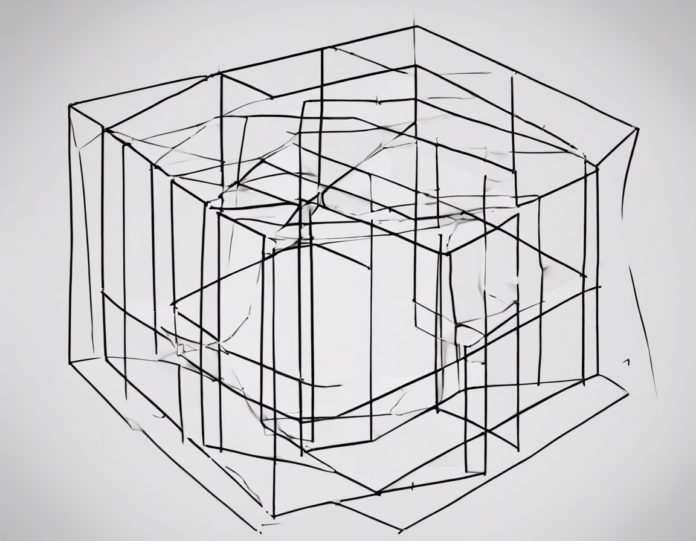When it comes to understanding spatial geometry, one of the most essential elements to grasp is the diagonal of a cube. The diagonal of a cube plays a crucial role in numerous mathematical calculations and has practical applications in various fields. In this comprehensive guide, we will delve into the significance of the cube's diagonal, its properties, how to calculate it, and real-world examples of its use.
Properties of the Cube's Diagonal
To comprehend the importance of the cube's diagonal, it is essential to understand its properties. Here are some key characteristics of the diagonal of a cube:
1. Length
The diagonal of a cube connects two opposite vertices through the center of the cube. It is the longest line segment that can be drawn within the cube, passing through the three-dimensional space.
2. Relationship with Side Length
In a cube, the diagonal is related to the side length (l) by the formula: diagonal = √3 x l. This means that the length of the diagonal is the square root of three times the length of one of the sides of the cube.
3. Pythagorean Relationship
The diagonal, side, and face diagonal of a cube form a right triangle. The relationship between these elements can be expressed using the Pythagorean theorem: diagonal² = side² + side² + side² or diagonal² = 3 x side².
4. Symmetry
The cube's diagonal divides the cube into two congruent pyramids, each with a square base. This symmetry is crucial in various mathematical and architectural applications.
Calculating the Cube's Diagonal
Calculating the diagonal of a cube is a straightforward process once you understand the relationships between the various components. To find the diagonal length of a cube, follow these steps:
- Determine the Side Length (l): Measure the length of one side of the cube.
- Apply the Formula: Use the formula diagonal = √3 x l to calculate the length of the diagonal.
- Calculate: Multiply the side length by the square root of three to find the diagonal length.
For example, if the side length of a cube is 5 cm, the diagonal length would be diagonal = √3 x 5 = 8.66 cm.
Real-World Applications
The concept of the cube's diagonal finds applications in various real-world scenarios, including:
- Engineering: When designing structures or machinery, engineers use diagonal measurements to ensure stability and structural integrity.
- Architecture: Architects utilize diagonal measurements in planning spaces, creating aesthetically pleasing designs, and optimizing structural support.
- Mathematics: The diagonal of a cube is fundamental in geometry and spatial mathematics, serving as a key element in calculating volumes, surface areas, and distances.
- Computer Graphics: In 3D modeling and computer graphics, understanding the cube's diagonal helps in creating realistic and accurate digital representations of objects.
- Physics: Diagonal measurements are essential in physics for analyzing forces, vectors, and motion in three-dimensional space.
Frequently Asked Questions (FAQs)
To further enhance your understanding of the cube's diagonal, here are some frequently asked questions with concise answers:
1. Is the diagonal of a cube longer than its side?
Yes, the diagonal of a cube is longer than its side. It is the longest line segment that can be drawn within the cube, passing through the three-dimensional space.
2. How is the diagonal of a cube related to its side length?
The diagonal of a cube is related to its side length by the formula: diagonal = √3 x l. This means that the diagonal is the square root of three times the length of one of the sides.
3. What is the significance of the Pythagorean relationship in a cube?
The Pythagorean relationship in a cube helps establish a connection between the diagonal, side, and face diagonal, enabling calculations involving these components.
4. How does the cube's diagonal contribute to symmetry in geometry?
The cube's diagonal contributes to the symmetry of the cube by dividing it into two congruent pyramids with a square base, which has applications in various mathematical and architectural contexts.
5. In what practical fields is the knowledge of the cube's diagonal crucial?
Understanding the cube's diagonal is crucial in fields such as engineering, architecture, mathematics, computer graphics, and physics, where three-dimensional spatial calculations play a vital role.
By grasping the properties, calculation methods, and real-world applications of the cube's diagonal, you can deepen your understanding of spatial geometry and its relevance in various disciplines. Whether you are a student, professional, or simply curious about the intricacies of geometry, the cube's diagonal serves as a foundational concept with multifaceted significance.

